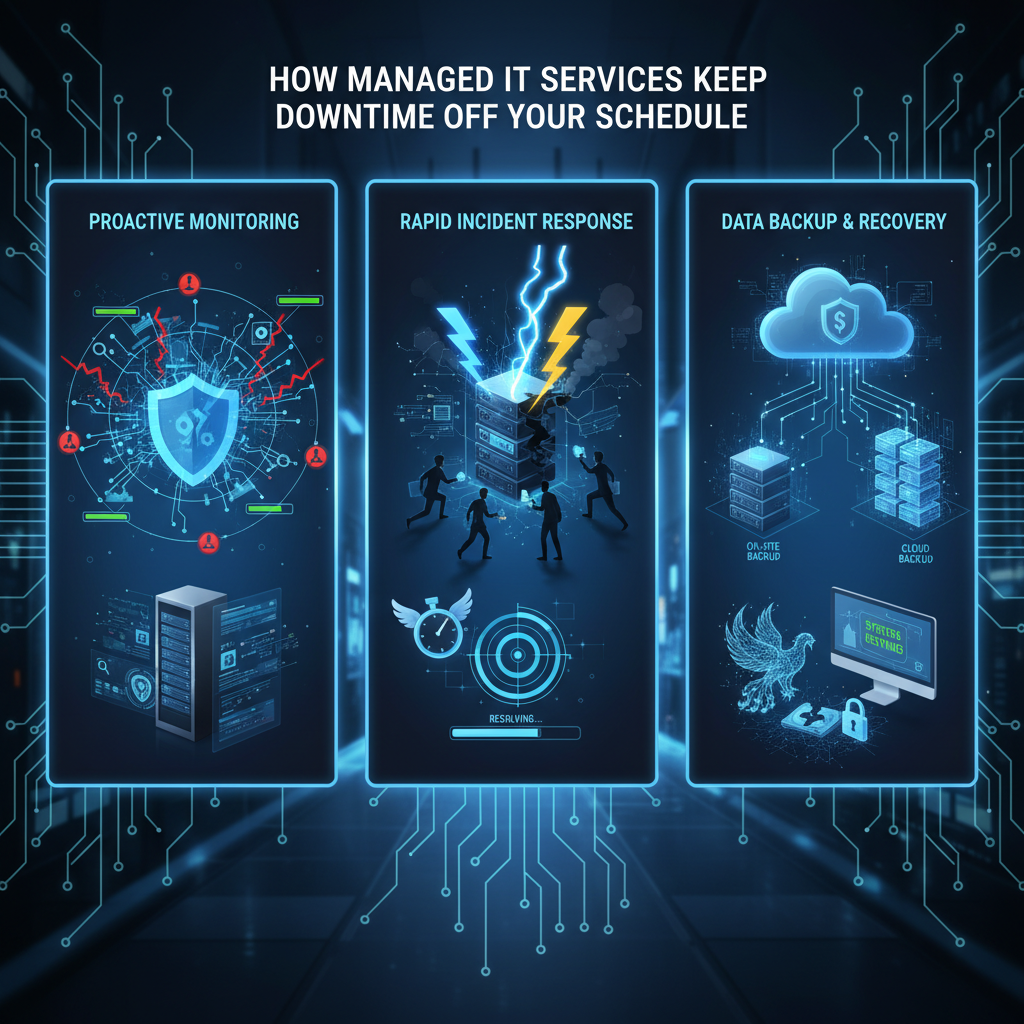When your systems go down, productivity doesn’t just pause it bleeds time, money, and trust. In a world where every minute counts, Managed IT Services have become the secret weapon of businesses that refuse to let downtime dictate their schedule. Instead of reacting to issues, managed services keep your technology running proactively, minimizing disruptions and maximizing output.
Why Downtime Is More Costly Than You Think
Many companies underestimate how expensive even short periods of downtime can be. Gartner estimates that the average cost of IT downtime is $5,600 per minute, adding up to hundreds of thousands of dollars per incident for mid-sized businesses.
Downtime doesn’t just mean systems are offline it means customers can’t connect, employees can’t work, and data might be at risk. When that happens repeatedly, the damage extends far beyond finances. Reputational harm and client frustration can take months to fix.
This is where Managed IT Services step in. Instead of waiting for things to break, they continuously monitor, maintain, and optimize your systems, ensuring that operations stay seamless even when challenges arise.
Proactive Monitoring: Stopping Problems Before They Start
The foundation of Managed IT Services lies in proactive management. Unlike the traditional break-fix approach, managed services operate 24/7 to detect potential issues before they turn into major problems.
Here’s how proactive monitoring keeps downtime off your schedule:
-
Real-time alerts identify irregular system performance instantly.
-
Automated maintenance ensures updates, patches, and security fixes happen without manual intervention.
-
Predictive analytics flag warning signs in hardware or software before failure occurs.
For example, if a server shows increased CPU usage, the managed IT team can investigate and resolve it before it crashes. This proactive care prevents the costly domino effect of a system-wide outage.
Comprehensive Backup and Disaster Recovery
Even with top-tier prevention, unexpected events like power failures, cyberattacks, or hardware malfunctions can occur. Managed IT Services include robust backup and disaster recovery plans designed to bring your systems back online within minutes, not days.
A 2024 report by Statista revealed that 70% of small businesses experienced at least one data loss incident in the past year. Those without a recovery plan took an average of five days to return to normal operations. In contrast, companies with managed recovery solutions were back up within hours.
These services ensure that your critical files, applications, and customer data are securely stored and easily recoverable no matter what happens.
Enhanced Cybersecurity and System Protection
Downtime often begins where security ends. A single data breach or ransomware attack can lock entire networks and halt business operations. Managed IT Services close that gap by providing continuous protection across every endpoint and device.
Key cybersecurity practices include:
-
24/7 network monitoring to detect and neutralize threats instantly.
-
Advanced endpoint protection that keeps systems safe from malware.
-
Employee awareness training to reduce human error — the leading cause of breaches.
According to IBM’s 2024 Cost of a Data Breach report, companies with fully managed cybersecurity frameworks save an average of $1.76 million per incident compared to those without. That’s not just savings — it’s sustained business continuity.
Automation: The Quiet Time Saver
Automation is a game-changer in preventing downtime. Managed IT Service providers use automation to perform updates, manage backups, monitor network health, and even deploy patches overnight, ensuring systems are ready before employees start their day.
By removing repetitive tasks from human hands, automation:
-
Reduces the margin for human error.
-
Increases operational consistency.
-
Frees up IT teams to focus on high-value strategic work.
This balance between automation and expert oversight means fewer interruptions, faster fixes, and a far smoother workflow.
The ROI of Staying Online
Many businesses hesitate to outsource IT because they see it as an added expense. But when you calculate the cost of downtime, data loss, and internal inefficiencies, Managed IT Services often pay for themselves and then some.
A CompTIA study found that companies using managed services save up to 25% annually on IT operations while experiencing 50% fewer outages. The predictable monthly cost structure also helps with budgeting, replacing surprise expenses with reliability and transparency.
Moreover, outsourcing IT management allows internal teams to focus on innovation, client service, and growth rather than firefighting technology issues.
Real-World Impact: Businesses That Stay Ahead
Take mid-sized manufacturing companies, for instance. With dozens of interconnected systems running production, a single server outage could delay shipments for days. By partnering with Managed IT Service providers, these businesses ensure real-time monitoring, immediate response, and automated updates that keep production lines running without interruption.
It’s not just about solving problems faster; it’s about preventing them entirely. The value of zero downtime isn’t theoretical it’s measurable in higher revenue, smoother operations, and stronger client trust.
Conclusion:
Technology downtime is no longer acceptable in the modern business landscape. Clients expect 24/7 accessibility, and employees rely on systems that simply work. With Managed IT Services, organizations can achieve exactly that stability, security, and efficiency that never sleep.
By combining proactive monitoring, disaster recovery, cybersecurity, and automation, managed services keep businesses one step ahead of disruption. They transform IT from a reactive expense into a proactive growth engine.
When your systems are up and your team is productive, every second saved becomes an opportunity earned. That’s the real power of Managed IT Services keeping your business running at full speed, every hour of every day.



